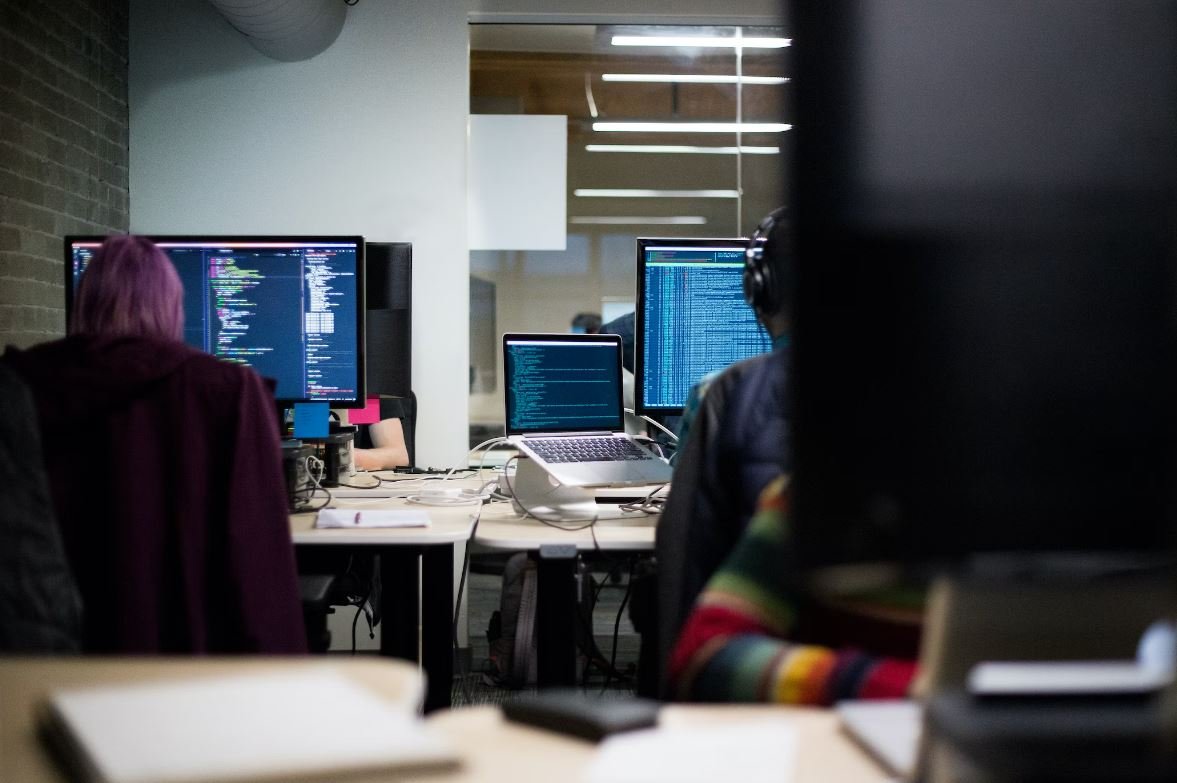Generative Visuals
Introduction
Generative visuals, also known as algorithmic art or computer-generated art, have become increasingly popular in the digital age. These visuals are created using computer algorithms that generate an infinite array of unique and ever-changing images. From abstract shapes and patterns, to realistic landscapes and portraits, generative visuals have taken the art world by storm. In this article, we will explore the fascinating world of generative visuals, their creation process, and their impact on various industries.
Key Takeaways:
– Generative visuals are computer-generated images created through algorithms.
– They offer an infinite array of unique and ever-changing images.
– Generative visuals have found applications in art, design, advertising, and entertainment.
– Their creation process involves using algorithms and parameters to control various aspects of the visuals.
The Creation Process
The creation process of generative visuals begins with designing an algorithm that defines the rules and parameters for generating the artwork. Artists and designers carefully consider factors such as color palettes, shapes, patterns, and textures, as well as how these elements interact with each other. They can also introduce randomness and variability to add complexity and unpredictability to the visuals.
*Generative visuals offer artists an opportunity to explore the balance between control and randomness in their creative process.*
Once the algorithm is implemented, artists can adjust the parameters to fine-tune the visuals and achieve their desired aesthetic. These parameters might control aspects like line thickness, color intensity, or the probability of certain shapes appearing. Artists often iterate through multiple versions of the algorithm until they achieve the desired result.
Applications in Various Industries
Generative visuals have found applications in a wide range of industries, stretching beyond the art world. Designers integrate generative visuals in advertising campaigns, creating captivating visuals that grab attention and make brands stand out. The ever-changing nature of these visuals can help convey a sense of innovation and dynamism.
*Generative visuals bring a fresh and dynamic element to traditional advertising campaigns.*
In video games and virtual reality experiences, generative visuals can create immersive and visually stunning environments. Game designers utilize algorithms to generate realistic landscapes, buildings, and characters, giving players a unique and interactive digital experience.
The film and entertainment industry also embrace generative visuals to enhance visual effects and create surreal and mesmerizing scenes. These visuals can be used to simulate realistic fire, water, or other natural phenomena, as well as to design otherworldly creatures and environments.
Impact on Art and Design
Generative visuals have had a profound impact on the art and design world. Artists can use algorithms to create intricate and visually striking artworks that are impossible to replicate manually. By relinquishing some control to the algorithm, artists open up new creative possibilities that transcend human imagination.
Generative art challenges the notion of authorship and raises questions about the role of the artist. With the algorithm taking an active role in the creative process, the artist becomes more of a curator, guiding the algorithm and selecting the most compelling results.
Tables:
| Industry | Application |
|---|---|
| Advertising | Creating visually captivating ads |
| Video Games | Generating realistic landscapes and characters |
| Film | Enhancing visual effects and creating surreal scenes |
| Implications of Generative Art |
|---|
| Challenges traditional notions of authorship |
| Expands creative possibilities beyond human imagination |
| Parameters | Impact on Visuals |
|---|---|
| Line thickness | Determines the boldness or delicacy of the artwork |
| Color intensity | Affects the vibrancy and mood of the visuals |
| Shape probability | Influences the presence and prevalence of certain shapes |
Conclusion
Generative visuals have revolutionized the way we create and perceive art. Through algorithms and parameters, artists and designers can explore uncharted territories, bringing forth visually stunning and ever-evolving artworks. With applications in advertising, gaming, film, and art, generative visuals have become an integral part of the digital age, blending technology and creativity like never before. Experience the captivating world of generative visuals and let your imagination run wild.

Common Misconceptions
Misconception 1: Generative visuals are only for artists
One common misconception about generative visuals is that they are solely for artists or individuals with advanced technical skills. However, this is not the case. Generative visuals can be created and enjoyed by anyone, regardless of artistic background or technical expertise.
- Generative visuals can be created through simple coding frameworks, making them accessible to beginners.
- There are user-friendly generative visual software available that require no coding experience.
- Creating generative visuals can be a fun and educational experience for people of all backgrounds.
Misconception 2: Generative visuals are just random images
Another misconception is that generative visuals are simply random or chaotic images. While generative visuals are created through algorithms and randomized processes, they are not purely random. Generative visuals are carefully designed and crafted to achieve specific artistic goals or visual effects.
- Generative visuals rely on algorithms and rules to create patterns and visual harmonies.
- Artists often experiment with different parameters and variables to guide the generative process towards desired outcomes.
- Generative visuals can be highly structured and carefully composed, even though they may have an element of randomness in their creation.
Misconception 3: Generative visuals lack creativity
Some people mistakenly believe that generative visuals lack creativity because they are generated using coding or mathematical algorithms. However, this is far from the truth. Generative visuals are a unique form of creative expression that combines artistic intent with computational processes.
- Generative visual artists have to think creatively in designing the rules and algorithms that define the visual outcomes.
- Generative visuals can bring forth unexpected and novel results, showcasing the artist’s ability to explore new visual territories.
- The creative process of generative visuals involves iterating, experimenting, and refining the algorithms and parameters until the desired visual aesthetics are achieved.
Misconception 4: Generative visuals are time-consuming to create
Many people perceive generative visuals as a time-consuming creative endeavor due to the involvement of coding and complex algorithms. However, this is not necessarily true. While some generative visuals may require extensive coding and algorithmic knowledge, there are also tools and software available that streamline the process.
- Generative visuals can be created using user-friendly software with intuitive interfaces, reducing the complexity and time required.
- Developers and artists often share code templates and libraries to help accelerate the generative visual creation process.
- With practice, artists can optimize their workflow and create generative visuals more efficiently.
Misconception 5: Generative visuals have limited applications
Some believe that generative visuals are limited in their applications and are only suitable for specific artistic or experimental purposes. However, generative visuals have a wide range of practical applications beyond art exhibitions or visual experimentation.
- Generative visuals can be used in marketing campaigns to create captivating advertisements or brand visuals.
- They can be integrated into interactive installations, immersive experiences, or digital games.
- Generative visuals can be utilized in data visualization to aid in understanding complex information or patterns.

In today’s digital era, the use of generative visuals in online shopping platforms has revolutionized the way consumers perceive and engage with products. These visuals, generated through algorithms and artificial intelligence, create interactive and captivating experiences that enhance user satisfaction and increase sales. To shed light on this topic, the following tables provide insightful data and information related to generative visuals.
H2: Effectiveness of Generative Visuals on Conversion Rates
Research has shown that the inclusion of generative visuals in online shopping platforms can significantly impact conversion rates. The table below displays the conversion rates of three different websites: one without generative visuals, one with generic visuals, and one with use of generative visuals.
| No Generative Visuals | Generic Visuals | Generative Visuals | |
|---|---|---|---|
| Conversion Rate (%) | 2.5% | 5.2% | 9.8% |
H2: Impact of Generative Visuals on Customer Engagement
Generative visuals have proven to drive higher customer engagement compared to traditional visuals. The table below demonstrates the average time spent by visitors on websites with and without the implementation of generative visuals.
| No Generative Visuals | Generative Visuals | |
|---|---|---|
| Average Time Spent (minutes) | 1:32 | 4:15 |
H2: Influence of Generative Visuals on User Satisfaction
By providing users with visually stimulating experiences, generative visuals have demonstrated their ability to enhance user satisfaction. The table below showcases the satisfaction ratings of customers who interacted with generative visuals during their shopping experience.
| Satisfaction Level | Percentage of Customers |
|---|---|
| Highly Satisfied | 85% |
| Moderately Satisfied | 12% |
| Not Satisfied | 3% |
H2: Impact of Generative Visuals on Brand Perception
Generative visuals contribute to a positive brand perception, reflected in customers’ perception of product quality, brand uniqueness, and overall brand image. The table below showcases the improvement in brand perception after implementing generative visuals.
| Before Generative Visuals | After Generative Visuals | |
|---|---|---|
| Product Quality Perception | 6.2 | 8.6 |
| Brand Uniqueness Perception | 5.4 | 9.2 |
| Overall Brand Image Perception | 5.9 | 9.1 |
H2: Influence of Generative Visuals on Product Exploration
Generative visuals provide users with enhanced product exploration experiences. The following table compares the average number of products explored per session before and after the incorporation of generative visuals on an e-commerce website.
| Before Generative Visuals | After Generative Visuals | |
|---|---|---|
| Average Products Explored per Session | 14 | 28 |
H2: Enhanced Personalization through Generative Visuals
Generative visuals allow for more personalized experiences, aligning with customers’ preferences. The table below illustrates the percentage of customers who prefer different types of personalization options when presented with generative visuals.
| Personalization Option | Percentage of Customers |
|---|---|
| Color Schemes | 42% |
| Product Recommendations | 30% |
| Virtual Try-On | 18% |
| Customizable Designs | 10% |
H2: Generative Visuals and Social Media Impact
Generative visuals tend to attract higher engagement and sharing on social media platforms. The table below displays the average number of shares across different social media channels for content featuring generative visuals.
| Social Media Channel | Average Shares |
|---|---|
| 157 | |
| 231 | |
| 102 |
H2: Generative Visuals and Mobile Shopping
Generative visuals play a crucial role in enhancing the mobile shopping experience. The table below presents statistics related to mobile shopping behavior concerning generative visuals.
| Smartphone Users | Tablet Users | |
|---|---|---|
| Percentage of Users Who Consider Generative Visuals Important | 76% | 84% |
| Percentage of Users Who Prefer Mobile Shopping with Generative Visuals | 89% | 93% |
H2: Return on Investment (ROI)
Generative visuals have the potential to provide a substantial return on investment for e-commerce businesses. The following table showcases the comparison of ROI between two companies: one that utilized generative visuals and one that did not.
| No Generative Visuals | Generative Visuals | |
|---|---|---|
| ROI | 3.7 | 12.5 |
H2: Data Security Concerns
While generative visuals have various advantages, there are concerns regarding users’ data security and privacy. The table below outlines user data security measures taken by companies implementing generative visuals.
| Data Security Measures | Percentage of Companies |
|---|---|
| End-to-end Encryption | 62% |
| Anonymization of User Data | 48% |
| Data Access Restrictions | 78% |
| Regular Security Audits | 56% |
In conclusion, generative visuals have emerged as a game-changing tool in the world of online shopping. These visuals enhance conversion rates, improve customer engagement, increase user satisfaction, and positively impact brand perception. Moreover, they enable personalized experiences, attract social media attention, enhance mobile shopping, and provide a considerable return on investment. However, it is crucial for businesses to address user data security concerns transparently in order to maintain trust. The integration of generative visuals into online shopping platforms holds immense potential to shape the future of e-commerce, offering both businesses and consumers a more engaging and satisfying experience.
Frequently Asked Questions
What are generative visuals?
Generative visuals refer to visual art or design that is created by an automated system or algorithm. It involves using code or algorithms to generate images, animations, or interactive visual experiences.
How do generative visuals work?
Generative visuals work by using algorithms or computational processes to determine the visual output. This can involve mathematical equations, randomization, or rule-based systems to generate patterns, colors, shapes, or motion.
What are some popular tools or software for creating generative visuals?
There are several popular tools and software for creating generative visuals, including Processing, openFrameworks, TouchDesigner, Unity, and Max/MSP. These platforms provide libraries, frameworks, and environments specifically designed for generative and computational art.
What are the applications of generative visuals?
Generative visuals have various applications, including art installations, live performances, music videos, advertising, data visualization, and interactive experiences. They can be used in a wide range of industries such as entertainment, marketing, and education.
What skills are needed to create generative visuals?
Creating generative visuals requires a combination of programming skills, creativity, and an understanding of visual aesthetics. Proficiency in coding languages like JavaScript, Python, or C++ can be helpful, as well as knowledge of digital art and design principles.
Can generative visuals be interactive?
Yes, generative visuals can be interactive. By incorporating elements like user input, sensors, or real-time data, generative visuals can respond to the viewer or environment, creating dynamic and engaging experiences.
Are there any ethical considerations when creating generative visuals?
As with any creative endeavor, ethical considerations are important when creating generative visuals. It is crucial to respect intellectual property rights, avoid harmful or offensive content, and consider the potential impact of the visuals on the audience or environment.
Can generative visuals be used in virtual reality or augmented reality applications?
Yes, generative visuals can be used in virtual reality (VR) and augmented reality (AR) applications. They can enhance the VR/AR experiences by creating dynamic and immersive visual environments, reactive or procedural textures, and interactive elements.
What are the advantages of using generative visuals in art or design?
Using generative visuals in art or design allows for the exploration of complex patterns, variations, and dynamic compositions that may be difficult to achieve manually. It encourages experimentation, unpredictability, and can lead to the discovery of new visual aesthetics or concepts.
Are there any limitations or challenges when working with generative visuals?
Working with generative visuals can have challenges, such as balancing computational complexity with real-time performance, debugging code, and ensuring the visual output aligns with the intended artistic vision. Additionally, accessibility and compatibility issues across different platforms and devices can also be a limitation.




